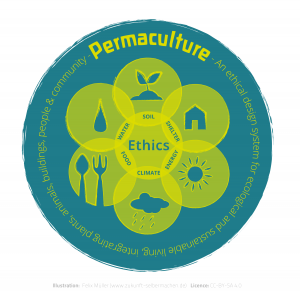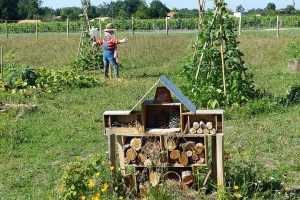Introduction to Permaculture

There are countless forms of agriculture but only three worth sharing in this book. Permaculture is the first and most important because, along with fruit forestry, it is the best agricultural strategy we can implement to improve our impact on the land.
Permaculture focuses on developing agricultural ecosystems that focus on sustainability and self-sufficiency. It is the approach that humans used for tens of thousands of years, before the rise of modern agriculture. Some examples used by indigenous people and ancient civilizations include agroforestry, and polycultural land management practices.
Permaculture as it is known today is based on the teachings and writings of Bill Mollison and David Holmgren, who coined the term in 1978. Permaculture is a holistic approach to farming and agriculture, which focuses on the inter-relationship of systems. It is based on principles that take into consideration food, soil, water, climate, shelter, energy, and ethics. The permaculture system extends its value system by focusing on the economy, transportation, health, governance, and the population as a whole.
Modern permaculture models offer a proactive approach to sustainability, and seek to achieve a better tomorrow for everyone. The recommended process and techniques help mitigate climate change, foster a green economy, develop biodiversity, revitalize soil life, ease poverty, provide a high return on investment, and strengthen local economies.
Previous Section:
Next Section:
Acknowledgments
Thank you for reading!
Please donate to help us publish this book.
PayPal: trevesbruno@gmail.com
Venmo: @Bruno-Treves

